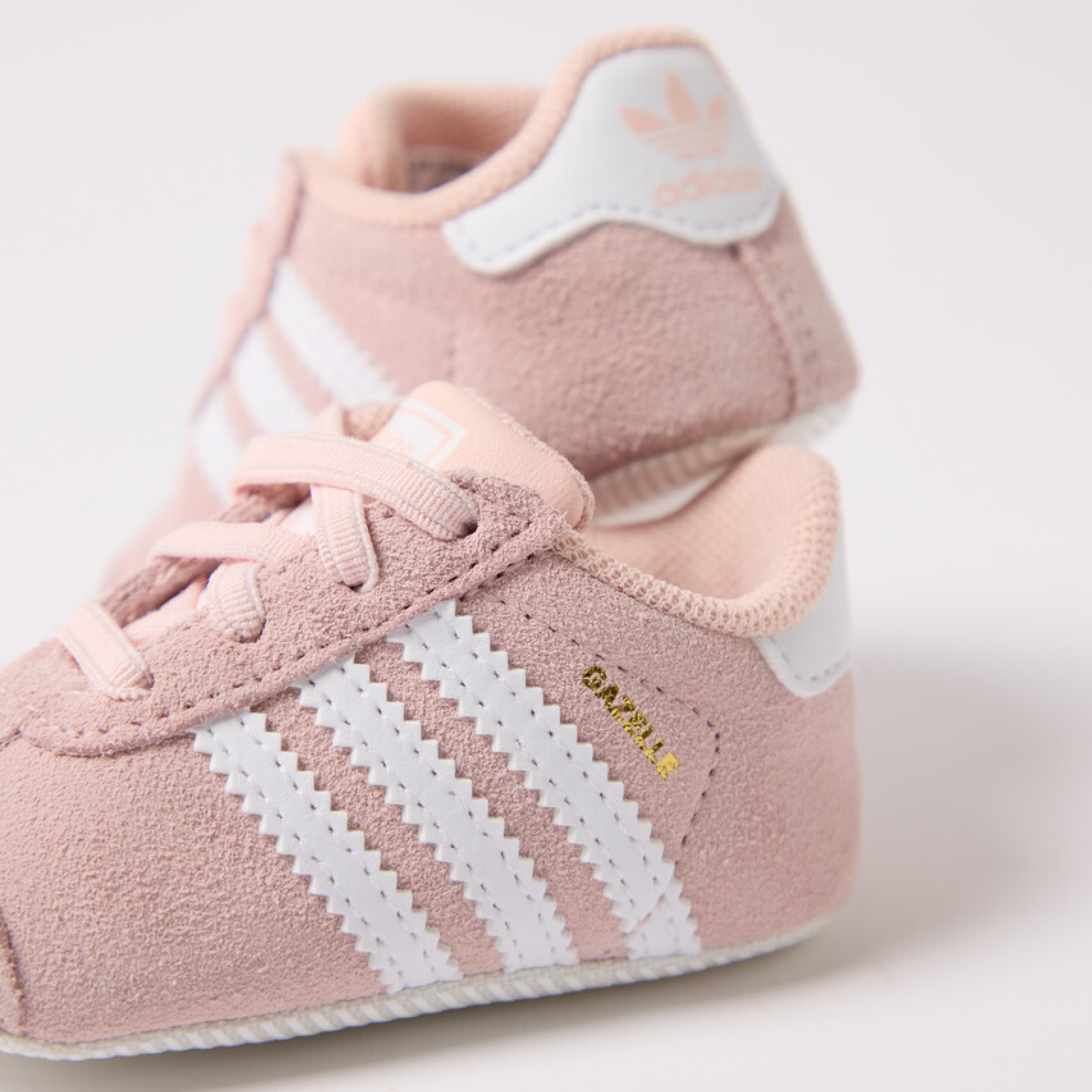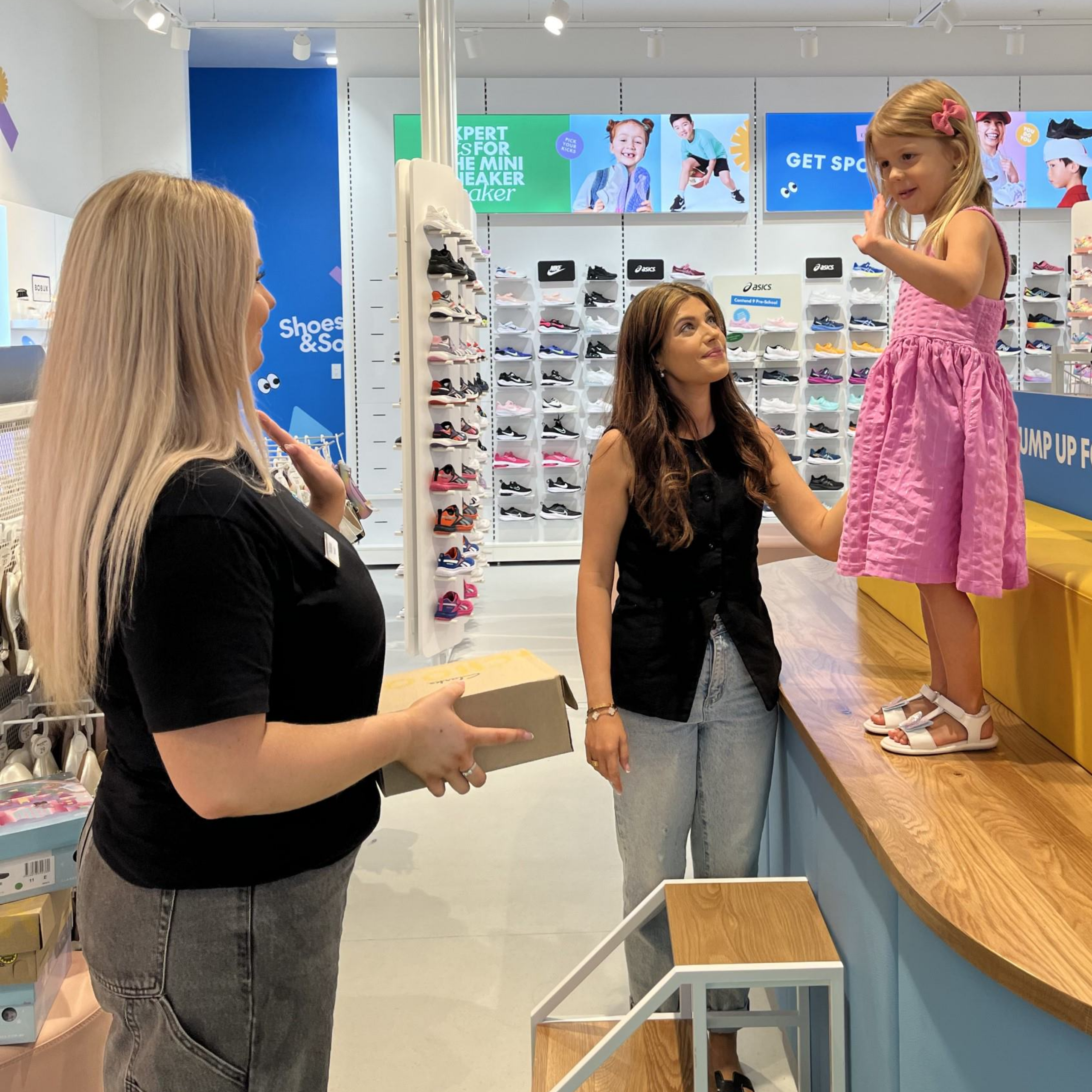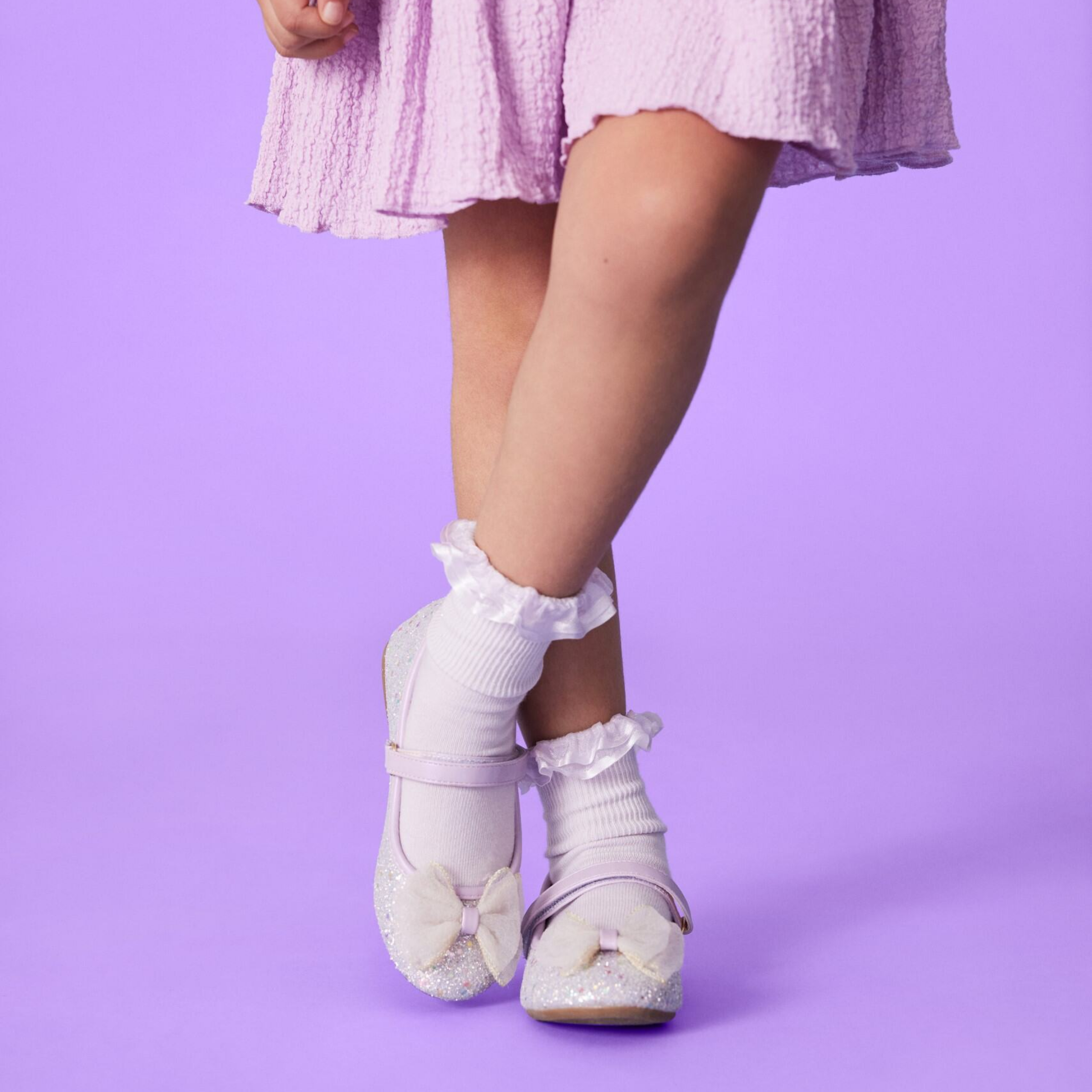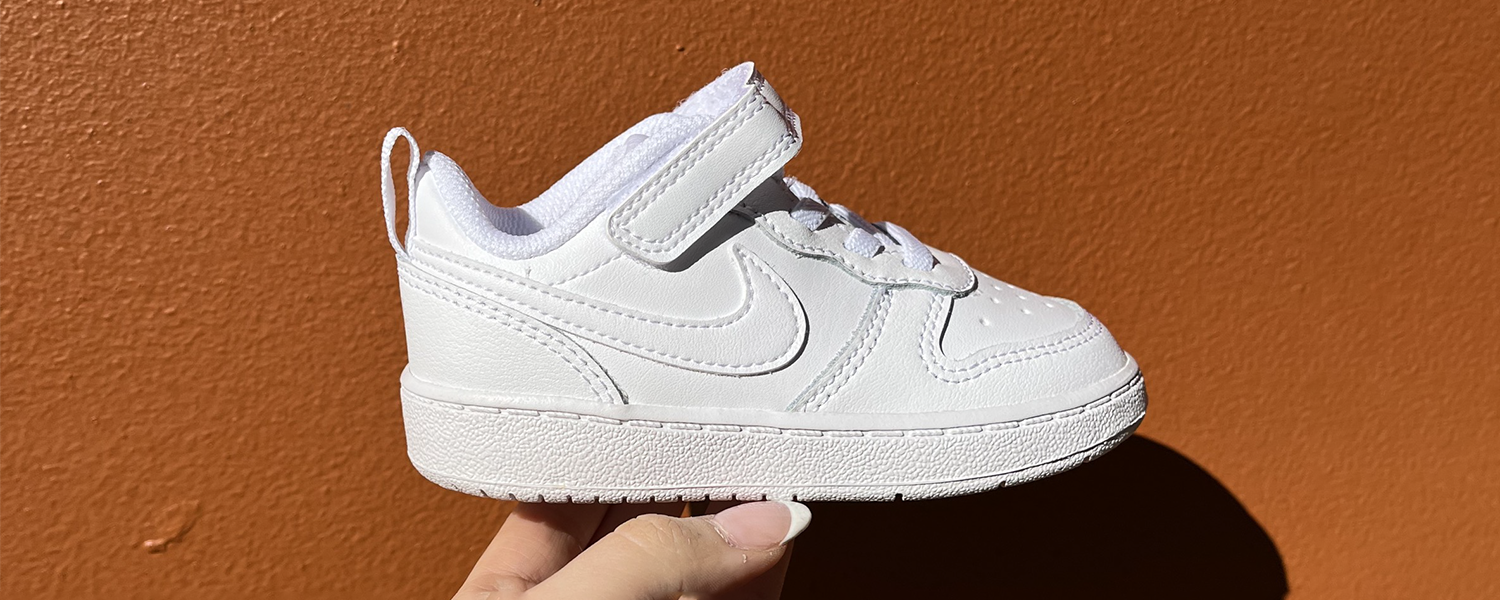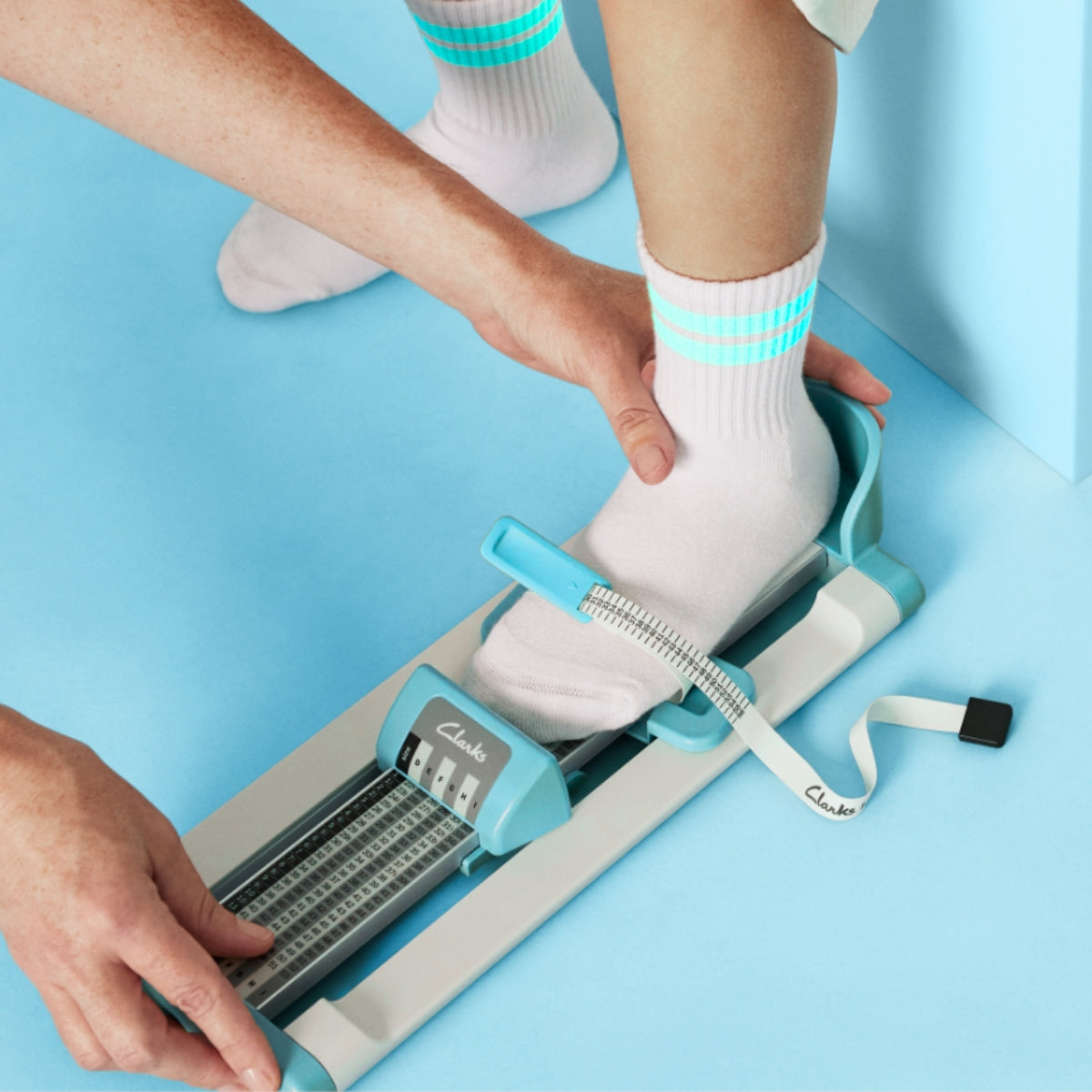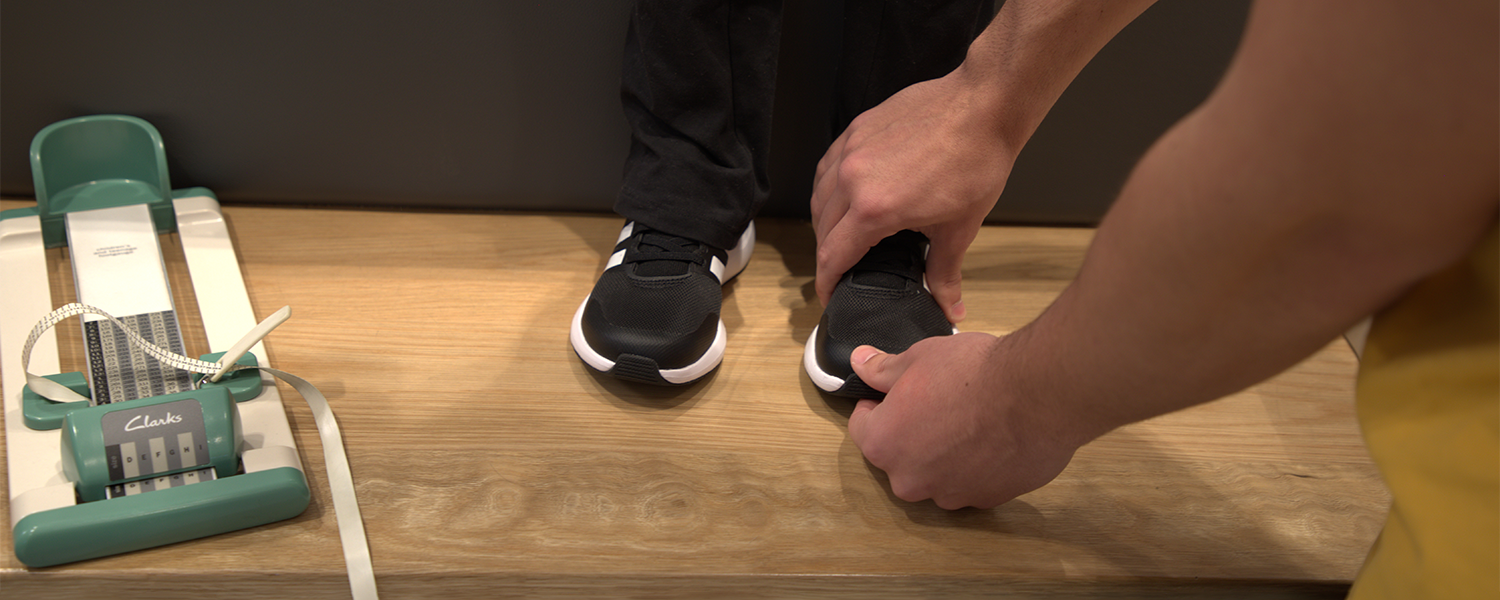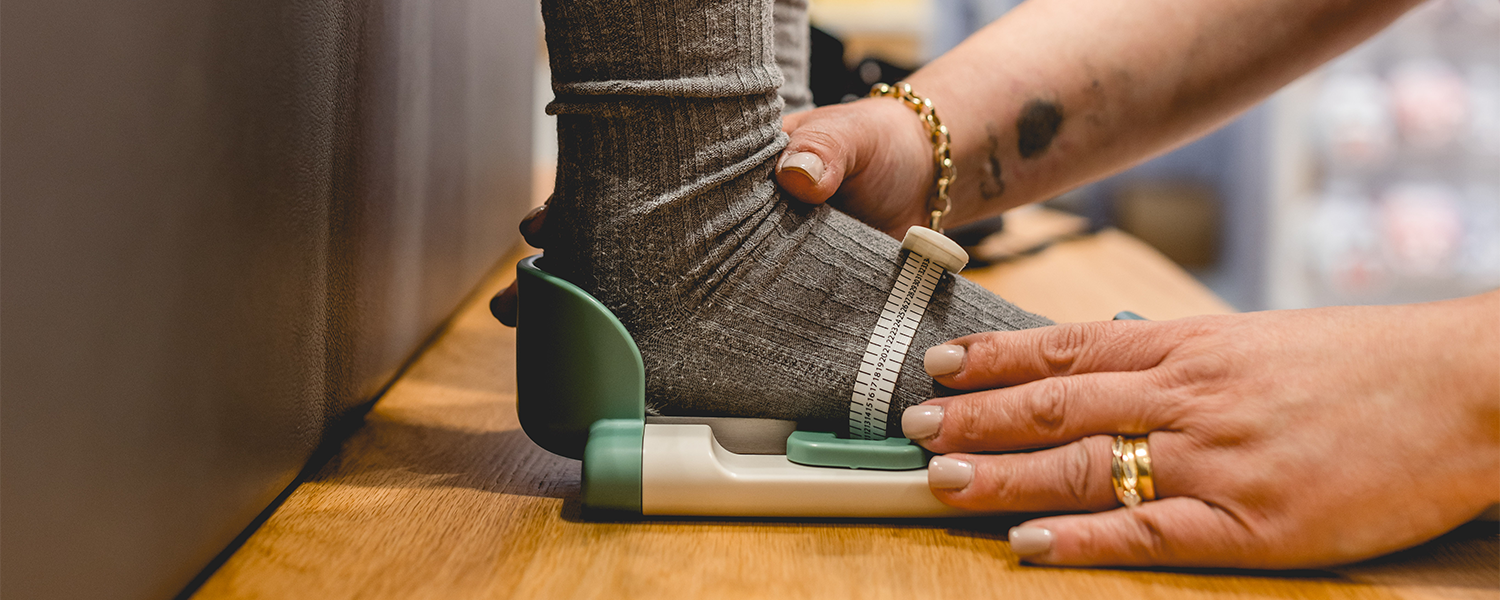
Meet Our Podiatrist
Opinion piece by Jessica Johnston, Clinical Podiatrist
School shoe shopping can be stressful for both the child involved and the parent/carer with large shopping centre crowds, often hot weather, nerves about starting back at school and the overwhelming choices of styles, so as a parent we want the process to be as seamless as possible.
Using a Kids Fit Consultant is your best bet at getting that seamless process for new School and Sport shoe purchases. The intensive three months of training these consultants undergo is evident with their foot measuring capabilities, knowledge of footwear models to suit your child’s foot, then testing the shoe out and asking the right types of questions to ensure the child feels included, understood and most importantly comfortable and safe. Working specifically with children daily puts a Kids Fit Consultant ahead of the game in shoe fitting, as they understand children’s foot anatomy, function and structure. Whilst I appreciate their skill in the technical of their job, the high level of customer service and interaction with kids displayed during my times in store is what is just as important to me. Being able to engage the child no matter the age, from a nervous Preppy, to a grumpy teenage boy that hates shopping, is vital to seek feedback on the fit and comfort and to encourage a healthy relationship between children and their bodies. The Consultants confidence and knowledge puts stressed parents at ease and reduces the burden of them having to self-serve in a store, the tricky task of measuring their own children’s feet and attempting to pick the right style shoe off the shelf.
As parents we always want what’s best for our children, so getting them professionally fitted for School & Sports shoes by dedicated Kids Fit Consultants is a no brainer for me.
1. Because quality shoes are an investment, no parent wants to muck this up! It can be heartbreaking when new school shoes only last the first term because they were purchased without adequate space at the toes, or your child complains they are uncomfortable because they are not wide enough. Having a Kids Fit Consultant fit the shoes, not only takes the responsibility and stress off you as a parent or carer in the store, but it means you are far more likely to get a decent amount of wear from these new shoes with a smile. Shoes & Sox even offer a one-month fit guarantee, giving you piece of mind that you can pop back into store for a free fit check within the following month for reassurance it’s the right sized shoe.
2. You can relax knowing that you are reducing your child’s risk for foot problems now and later in life! Quality made shoes with an appropriate style and correct fit ensures your child’s foot can develop as normal and you are reducing their risk of bony deformities, skin irritations, ingrown toenails and many other sorts of footwear related injuries. Using poor quality school and sport footwear that have not been professionally fit, may be cheaper in the short term but can cost parents money down the track in visits to the GP, Podiatrist or Physiotherapist, replacing shoes and missed school and activities.
I often compare footwear to reading glasses, we would never pick our own lenses prescription and frames without the assistance of an Optometrist and optical dispenser, so feet are equally as important with using a specialised shoe store with appropriately trained staff that stock quality products at hand.
As parents, we want our children’s school shoes to last for as long as they fit them, ideally even longer so they can be passed on to siblings or friends! The only way this is possible, is if it’s a quality made shoe with many construction and technological features that can’t always be seen with the naked eye. Quality school shoes are normally hand stitched as opposed to glued, they contain natural leather materials compared to synthetics and are normally produced in smaller quantities making quality control far better. The construction behind the shoe is what gives it a longer lifespan and the materials are what helps keep the shoe breathable, comfortable and weatherproof. As parents, (unless you are a Cobbler!) it can be sometimes be difficult to tell how well the shoe has been made and if it is of a true quality nature. But here a few handy hints you can try next time you are shopping for your children’s school shoes
1. While holding the shoe, does the sole/shank bend in half or side to side significantly? If yes, it’s likely a poor-quality sole material offering little support and it is unlikely to be a robust shoe over time
2. Squeeze the heel counter at the back of the shoe, does it collapse? If yes, again it’s like a poor-quality material that will not sit snug around the back of the ankle for the perfect fit and hold that we look for when fitting shoes
3. What kind of materials can you see? Excessive use of plastics in sport shoes or synthetics in school shoes can be a sign of poor-quality
4. Are you dealing with a reputable brand? Shoes & Sox stock many well known Australian brands that as parents we likely wore growing up.
Children are in their school shoes for approximately 40 hours per week, highlighting why a perfect fit and style is imperative for good foot health now and in the future. Compromising on quality, size or style due to a small range in some stores could place your child at higher risk for foot problems. Many budget department stores and now even some supermarkets stock school shoes but their range will often only run in straight sizes, single width offerings and basic styles, meaning that children do not have the chance to be fit with a tailored shoe for their needs. For example, the Clarks ‘Daytona’ comes in 184 different size combinations, allowing all children no matter how unique their foot type is, to be fit properly without compromising on comfort and style.
If you are unable to bring your child into a store, the convenience of online shopping at shoesandsox.com.au means you still have access to Australia’s largest range of school shoes. The online size conversion chart, fit guides and easy returns mean your child does not have to miss out being able to wear perfectly fit school shoes.
Many paediatric presentations to my Podiatry clinic are foot injuries and complaints directly related to the child’s footwear. Whether the shoe is the incorrect size from not being fit by a professional or a recent growth spurt or the wrong style for their foot, we as foot health professionals commonly see these foot problems:
Nail injuries: ingrown toenails, toenails lifting from the nail bed or bruised toenails can all be painful, unsightly and impact on your child to perform daily activities comfortably on their feet. There is a risk with nail injuries that they develop an infection that may require antibiotics or minor surgery. Nail injuries are normally caused from shoes that are:
- Not wide enough, which essentially squashes the toes causing ingrown nails
- Too big, the foot moves around making the nails knock the end of the shoe causing microtrauma (bruising, lifting, thickening)
- Too small, the toes are crammed into the toe box placing extra pressure on delicate nails
Corns & hard skin build-up: corn or hard skin formation can be very uncomfortable and reoccurring if footwear problems are not addressed. These types of skin conditions are normally caused from shoes that are:
- Too big, the foot slides around in the shoe (as little as a few millimetres is all it takes) creating friction on the skin. Our bodies create hard skin (aka callous, or hyperkeratosis) as a protective mechanism which in turn can become painful
- Not wide enough, a common location for a corn is on the outside of the 5th toe. This area is subjected to a lot of pressure if the shoe is not wide enough
Muscle aches and pains: there are a number of different foot pathologies that can cause foot muscle pain, fatigue and aches. These types of foot injuries are often caused by ill-fitting/poor quality shoes and the correct footwear is normally part of the treatment plan for recovery.
- Poor quality soles, budget brand school and sport shoes often feel OK for the first few weeks, but these low-grade materials are not robust, quickly losing their shock absorption capabilities putting more forces and pressure onto the foot
- Inappropriate style, too often I see girls replacing a traditional school shoe with a ballet flat or boys replacing a sports shoe with a leisure sneaker. Both styles offer little support, have poor fixation and are simply not built for day to day wear as a busy student
Foot injuries often mean discomfort for the child involved, extra appointments with health professionals, lost time from school and extracurricular activities and other ramifications on health and wellbeing. Having footwear professionally fitted initially, then regularly checking the fit and encouraging the correct style of shoe to match the activity can all lead to a reduction in the risk for foot health problems.
For physical education in school, a regular sports shoe which is often called a ‘cross trainer’ is suffice. Two of my preferred brands in this domain for children are New Balance and Asics. They can be used for court-based sports, running, walking and all sorts of physical activities. However, when playing competition tennis, netball, basketball or even athletics your child may need to move into a specialised shoe for that sport. Tennis and netball shoes are similar in the sense they are very rigid, supportive and have tough grip for the short, sharp movements required in those games. Basketball shoes are typically high tops and sit around the ankle to offer more support with jumping and leaping required in a match. Athletics shoes are very thin, fit like a glove and can even have spikes for better grip in the ground. Specialised sport shoes mentioned here would not normally be required until late primary school/early high school.
It is important to not use a ‘leisure’ shoe for sport, these can include fashion sneakers, skate shoes, canvas lace ups and other similar versions. Leisure shoes are not made with the same kind of shock absorbing sole, supportive materials and protective uppers like sport shoes are. In high school, many students may choose a fashion sneaker to be worn with their sports uniform, but this should be discouraged as it may increase their rate for injury and be a deterrent for playing sport due to low comfort levels.
Why it’s important to have your child fitted by a children’s Fit Consultant (not a general Fit Consultant)
Feet are unique, delicate and are undergoing rapid changes of development in childhood and teenage years, which means the footwear attached to them must be a perfect fit and an appropriate style to give the best chance for good foot health today, tomorrow and in later years.School shoe shopping can be stressful for both the child involved and the parent/carer with large shopping centre crowds, often hot weather, nerves about starting back at school and the overwhelming choices of styles, so as a parent we want the process to be as seamless as possible.
Using a Kids Fit Consultant is your best bet at getting that seamless process for new School and Sport shoe purchases. The intensive three months of training these consultants undergo is evident with their foot measuring capabilities, knowledge of footwear models to suit your child’s foot, then testing the shoe out and asking the right types of questions to ensure the child feels included, understood and most importantly comfortable and safe. Working specifically with children daily puts a Kids Fit Consultant ahead of the game in shoe fitting, as they understand children’s foot anatomy, function and structure. Whilst I appreciate their skill in the technical of their job, the high level of customer service and interaction with kids displayed during my times in store is what is just as important to me. Being able to engage the child no matter the age, from a nervous Preppy, to a grumpy teenage boy that hates shopping, is vital to seek feedback on the fit and comfort and to encourage a healthy relationship between children and their bodies. The Consultants confidence and knowledge puts stressed parents at ease and reduces the burden of them having to self-serve in a store, the tricky task of measuring their own children’s feet and attempting to pick the right style shoe off the shelf.
As parents we always want what’s best for our children, so getting them professionally fitted for School & Sports shoes by dedicated Kids Fit Consultants is a no brainer for me.
Why is it important to have your child’s feet fitted correctly?
As a Podiatrist that sees children with foot problems daily in clinic and as a Mum with two young children, there are two main reasons that are at the forefront of my mind as to why it’s important that your child is fit for shoes correctly;1. Because quality shoes are an investment, no parent wants to muck this up! It can be heartbreaking when new school shoes only last the first term because they were purchased without adequate space at the toes, or your child complains they are uncomfortable because they are not wide enough. Having a Kids Fit Consultant fit the shoes, not only takes the responsibility and stress off you as a parent or carer in the store, but it means you are far more likely to get a decent amount of wear from these new shoes with a smile. Shoes & Sox even offer a one-month fit guarantee, giving you piece of mind that you can pop back into store for a free fit check within the following month for reassurance it’s the right sized shoe.
2. You can relax knowing that you are reducing your child’s risk for foot problems now and later in life! Quality made shoes with an appropriate style and correct fit ensures your child’s foot can develop as normal and you are reducing their risk of bony deformities, skin irritations, ingrown toenails and many other sorts of footwear related injuries. Using poor quality school and sport footwear that have not been professionally fit, may be cheaper in the short term but can cost parents money down the track in visits to the GP, Podiatrist or Physiotherapist, replacing shoes and missed school and activities.
I often compare footwear to reading glasses, we would never pick our own lenses prescription and frames without the assistance of an Optometrist and optical dispenser, so feet are equally as important with using a specialised shoe store with appropriately trained staff that stock quality products at hand.
Why is it important for my child to wear good quality footwear? How does the shoes construction and quality affect their foot?
As parents, we want our children’s school shoes to last for as long as they fit them, ideally even longer so they can be passed on to siblings or friends! The only way this is possible, is if it’s a quality made shoe with many construction and technological features that can’t always be seen with the naked eye. Quality school shoes are normally hand stitched as opposed to glued, they contain natural leather materials compared to synthetics and are normally produced in smaller quantities making quality control far better. The construction behind the shoe is what gives it a longer lifespan and the materials are what helps keep the shoe breathable, comfortable and weatherproof. As parents, (unless you are a Cobbler!) it can be sometimes be difficult to tell how well the shoe has been made and if it is of a true quality nature. But here a few handy hints you can try next time you are shopping for your children’s school shoes
1. While holding the shoe, does the sole/shank bend in half or side to side significantly? If yes, it’s likely a poor-quality sole material offering little support and it is unlikely to be a robust shoe over time
2. Squeeze the heel counter at the back of the shoe, does it collapse? If yes, again it’s like a poor-quality material that will not sit snug around the back of the ankle for the perfect fit and hold that we look for when fitting shoes
3. What kind of materials can you see? Excessive use of plastics in sport shoes or synthetics in school shoes can be a sign of poor-quality
4. Are you dealing with a reputable brand? Shoes & Sox stock many well known Australian brands that as parents we likely wore growing up.
Why is it better to shop at a retailer who has a large range of brands, styles and sizes?
Being able to visit a speciality shoe store with your child that has expertly trained staff and offers reputable brands with a large range of half sizes, different width fittings and vast array of styles means that every child has the opportunity to walk out with a perfectly fit shoe on the day with a smile on their face.Children are in their school shoes for approximately 40 hours per week, highlighting why a perfect fit and style is imperative for good foot health now and in the future. Compromising on quality, size or style due to a small range in some stores could place your child at higher risk for foot problems. Many budget department stores and now even some supermarkets stock school shoes but their range will often only run in straight sizes, single width offerings and basic styles, meaning that children do not have the chance to be fit with a tailored shoe for their needs. For example, the Clarks ‘Daytona’ comes in 184 different size combinations, allowing all children no matter how unique their foot type is, to be fit properly without compromising on comfort and style.
If you are unable to bring your child into a store, the convenience of online shopping at shoesandsox.com.au means you still have access to Australia’s largest range of school shoes. The online size conversion chart, fit guides and easy returns mean your child does not have to miss out being able to wear perfectly fit school shoes.
What are the potential foot issue/problems caused by not wearing correctly fitted shoes?
Many paediatric presentations to my Podiatry clinic are foot injuries and complaints directly related to the child’s footwear. Whether the shoe is the incorrect size from not being fit by a professional or a recent growth spurt or the wrong style for their foot, we as foot health professionals commonly see these foot problems:
Nail injuries: ingrown toenails, toenails lifting from the nail bed or bruised toenails can all be painful, unsightly and impact on your child to perform daily activities comfortably on their feet. There is a risk with nail injuries that they develop an infection that may require antibiotics or minor surgery. Nail injuries are normally caused from shoes that are:
- Not wide enough, which essentially squashes the toes causing ingrown nails
- Too big, the foot moves around making the nails knock the end of the shoe causing microtrauma (bruising, lifting, thickening)
- Too small, the toes are crammed into the toe box placing extra pressure on delicate nails
Corns & hard skin build-up: corn or hard skin formation can be very uncomfortable and reoccurring if footwear problems are not addressed. These types of skin conditions are normally caused from shoes that are:
- Too big, the foot slides around in the shoe (as little as a few millimetres is all it takes) creating friction on the skin. Our bodies create hard skin (aka callous, or hyperkeratosis) as a protective mechanism which in turn can become painful
- Not wide enough, a common location for a corn is on the outside of the 5th toe. This area is subjected to a lot of pressure if the shoe is not wide enough
Muscle aches and pains: there are a number of different foot pathologies that can cause foot muscle pain, fatigue and aches. These types of foot injuries are often caused by ill-fitting/poor quality shoes and the correct footwear is normally part of the treatment plan for recovery.
- Poor quality soles, budget brand school and sport shoes often feel OK for the first few weeks, but these low-grade materials are not robust, quickly losing their shock absorption capabilities putting more forces and pressure onto the foot
- Inappropriate style, too often I see girls replacing a traditional school shoe with a ballet flat or boys replacing a sports shoe with a leisure sneaker. Both styles offer little support, have poor fixation and are simply not built for day to day wear as a busy student
Foot injuries often mean discomfort for the child involved, extra appointments with health professionals, lost time from school and extracurricular activities and other ramifications on health and wellbeing. Having footwear professionally fitted initially, then regularly checking the fit and encouraging the correct style of shoe to match the activity can all lead to a reduction in the risk for foot health problems.
Why is it important to get the right sport shoe style for your child’s foot?
Depending on the age of your children and the level of sport they are playing will determine whether you need a specialised sport shoe or can use a regular ‘cross trainer’.For physical education in school, a regular sports shoe which is often called a ‘cross trainer’ is suffice. Two of my preferred brands in this domain for children are New Balance and Asics. They can be used for court-based sports, running, walking and all sorts of physical activities. However, when playing competition tennis, netball, basketball or even athletics your child may need to move into a specialised shoe for that sport. Tennis and netball shoes are similar in the sense they are very rigid, supportive and have tough grip for the short, sharp movements required in those games. Basketball shoes are typically high tops and sit around the ankle to offer more support with jumping and leaping required in a match. Athletics shoes are very thin, fit like a glove and can even have spikes for better grip in the ground. Specialised sport shoes mentioned here would not normally be required until late primary school/early high school.
It is important to not use a ‘leisure’ shoe for sport, these can include fashion sneakers, skate shoes, canvas lace ups and other similar versions. Leisure shoes are not made with the same kind of shock absorbing sole, supportive materials and protective uppers like sport shoes are. In high school, many students may choose a fashion sneaker to be worn with their sports uniform, but this should be discouraged as it may increase their rate for injury and be a deterrent for playing sport due to low comfort levels.
Read More







